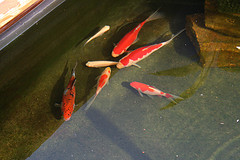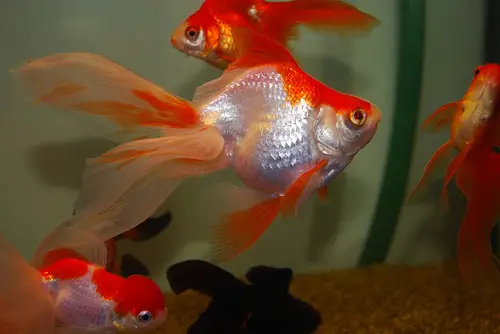It can be difficult to tell the sex of a goldfish, but not impossible. It very much depends on whether you buy a young fish or an adult fish. If you get a young fish you have to wait until it reaches breeding age, which is about a year old, before being able to tell what sex it is. Goldfish kept in outdoor ponds reach breeding condition about once a year, usually around Spring as it’s warmer, and goldfish kept in indoor tanks can reach breeding condition at any time of the year depending on how warm the water is and the foods they’re fed.
Generally, females have fuller abdomens and if viewed from above the tank they will usually be larger on one side of their bodies, whereas a male will be more even in shape when viewed from this angle. If you look closely at the gill covers and along the front edge of the pectoral fins, you may be able to see tiny white pimples, called breeding tubercles, on a male goldfish.
These are not always displayed though, and can be difficult to spot, but males usually spend most of their time chasing females round the tank to induce them to spawn, so typically the chaser will be a male, while the fish being chased is usually a female. This is not a sure-fire way of determining sex though, as in the absence of females males will chase each other round the tank as well, so it’s best to combine the physical features with the chasing behaviour to find out the sex.
Generally, females have fuller abdomens and if viewed from above the tank they will usually be larger on one side of their bodies, whereas a male will be more even in shape when viewed from this angle. If you look closely at the gill covers and along the front edge of the pectoral fins, you may be able to see tiny white pimples, called breeding tubercles, on a male goldfish.
These are not always displayed though, and can be difficult to spot, but males usually spend most of their time chasing females round the tank to induce them to spawn, so typically the chaser will be a male, while the fish being chased is usually a female. This is not a sure-fire way of determining sex though, as in the absence of females males will chase each other round the tank as well, so it’s best to combine the physical features with the chasing behaviour to find out the sex.


